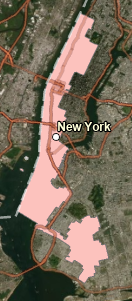Lab 6 [GIS5935]: Scale Effect and Spatial Data Aggregation

In this lab, we examined the effects of scale and resolution on the properties of spatial data. On vector data, as scale becomes finer, we expect to see increases in the number of areas and volumes, more detail in boundaries, and more homogeneity in the features (Goodchild, 2011, pp. 6). This occurs because coarser scales (e.g., 1:100000) are more generalized, and thus a smaller number of polygons capture the most significantly sized features, while omitting smaller features. As more details are captured at finer scales (e.g., 1:1200) compared to coarser scales, geometric characteristics such as the sum of total lengths for hydrographic features will increase, based on the addition of the captured smaller features. On raster data, as resolution becomes coarser (e.g., going from 1x1m to 90x90m cells), the image becomes more smoothed, as represented by increasingly smaller average slopes as steep regions are averaged into surrounding non-steep terrain regions. Kienzle observed this whe...
